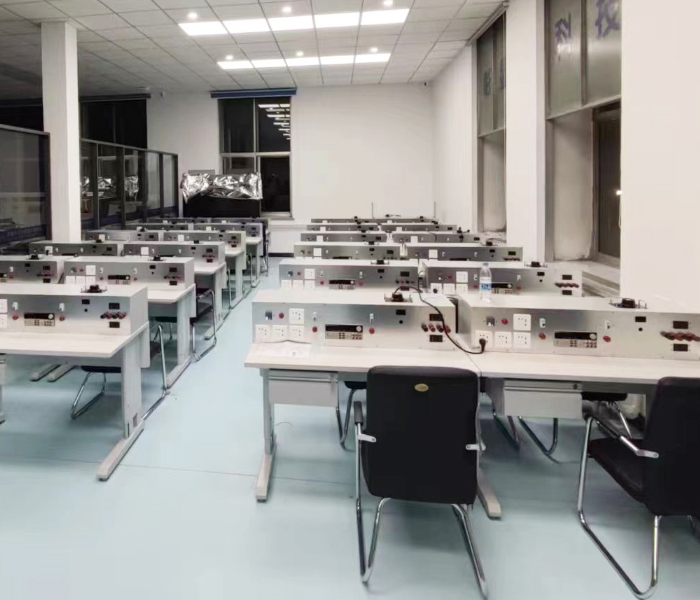Table of Contents
In today’s highly specialized laboratory environments, ensuring both safety and precision is crucial. One of the key components of this is using the right workbench, especially when handling sensitive electronics. Enter the ESD (Electrostatic Discharge) workbench—an essential fixture in laboratories where even the smallest electrostatic discharge can damage delicate equipment. This guide will help you understand why your lab might need an ESD workbench, what types of labs should invest in one, and what requirements and precautions you need to consider.
Why Laboratories Need ESD Workbench?
Electrostatic discharge might seem trivial, but in many laboratories, it poses a significant risk to sensitive components and equipment. When two materials come into contact and then separate, they can create an electrostatic charge. This buildup can discharge unexpectedly, potentially damaging or even destroying electronic devices and materials that are sensitive to static electricity.
In laboratories that deal with semiconductors, electronic testing, or any form of equipment with sensitive circuits, an ESD workbench is critical. These workbenches are designed to minimize or eliminate the buildup of static electricity, preventing costly damage to equipment and ensuring the accuracy and reliability of test results.
Moreover, ESD-safe workbenches protect not only equipment but also personnel. Reducing the likelihood of static discharges improves safety conditions in the lab. By implementing an ESD workbench, labs can reduce equipment failure, improve efficiency, and create a safer work environment for all staff.
What Type of Laboratories Need ESD Workbench?
While not every laboratory requires an ESD workbench, there are several industries and types of labs where they are indispensable.
Electronics Laboratories: Any lab that handles the assembly, repair, or testing of electronic components, such as circuit boards or microchips, must have ESD protection to prevent static discharge from damaging sensitive parts.
Semiconductor Facilities: In semiconductor labs, where tiny chips and wafers are created and tested, even the smallest ESD event can ruin entire batches of product. ESD workbenches are vital for safeguarding these operations.
Research and Development (R&D) Labs: In R&D environments, particularly those involved with new technology or product development involving electronics, ESD protection is necessary to ensure the reliability of testing and experimentation.
Telecommunications and Aerospace Labs: Both telecommunications and aerospace sectors rely on electronic components that are highly sensitive to electrostatic discharge. Protecting these components in lab settings is critical for preventing costly delays and errors in development.
Medical Device Labs: ESD-sensitive medical devices, such as pacemakers, require stringent ESD protection to ensure the integrity of the devices being developed and tested in these labs.
What Is the Requirement for ESD Workbench?
When setting up an ESD workbench, there are certain industry standards and requirements that must be met to ensure proper protection:
- ESD-Safe Surface Materials: The top surface of an ESD workbench should be made of static dissipative material, typically with a surface resistance between 1 x 10^6 and 1 x 10^9 ohms. This material will safely dissipate any static charge that builds up.
- Grounding: One of the most critical elements of an ESD workbench is the grounding system. All ESD surfaces, such as mats or benches, must be connected to a proper ground, allowing any electrical discharge to safely exit the system without impacting sensitive equipment.
- Wrist Straps and ESD Mats: Many labs also incorporate additional ESD protection accessories such as wrist straps and grounding mats to further minimize the risk of electrostatic buildup. These components are vital for ensuring personnel don’t inadvertently discharge static electricity onto sensitive equipment.
- ESD Chairs and Shelving: In addition to the workbench itself, chairs and shelving should also be made from or coated with ESD-safe materials. Without these, static can still build up in the surrounding environment and compromise safety.
- Compliance with ESD Standards: Depending on your industry, compliance with standards such as ANSI/ESD S20.20 or IEC 61340-5-1 is crucial. These standards provide guidelines on creating and maintaining ESD-safe environments, including specifications for workbenches, flooring, and other lab components.
What Attention You Need to Pay When Using ESD Workbench in Laboratories?
Even with a high-quality ESD workbench, the effectiveness of your setup depends on proper usage and maintenance. Here are some important considerations when using ESD workbenches in a lab setting:
- Consistent Grounding Checks: Ensure that your workbench is properly grounded at all times. Regularly check all grounding points and connections to avoid any faults that might render the bench ineffective.
- Regular Cleaning: ESD workbenches must be kept clean to function properly. Dust and dirt can affect the dissipative properties of the surface, leading to the buildup of static electricity. Use cleaners specifically designed for ESD surfaces and avoid using standard cleaners that might add static-generating residue.
- Proper Training for Staff: Everyone working around an ESD workbench should be trained on proper procedures, including how to wear ESD wrist straps, how to handle sensitive materials, and how to avoid generating static in the work area.
- Monitoring Humidity Levels: Low humidity environments are more prone to static buildup. It’s important to monitor the humidity in your lab and, if necessary, install humidifiers to maintain a proper level (ideally between 40% and 60%).
- Avoid Non-ESD Materials: Ensure that no non-ESD materials are placed on or around the workbench. Items such as plastics, certain types of fabric, and other high-resistance materials can introduce unwanted static into your work area.
Conclusion
The implementation of an ESD workbench in a laboratory is an investment in protecting both equipment and personnel. For labs handling sensitive electronics or components, it’s not just a recommendation but a necessity. By understanding the type of labs that benefit from ESD workbenches, the requirements for setup, and the precautions to take during use, you can ensure the longevity of your equipment and the safety of your lab. As ESD workbenches become more prevalent in labs across various industries, incorporating one into your workspace can significantly reduce risks and improve operational efficiency.




